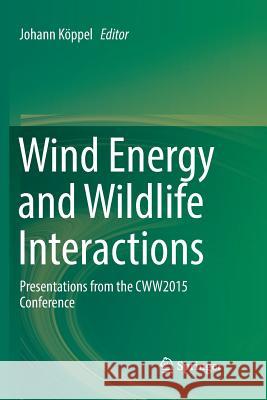Wind Energy and Wildlife Interactions: Presentations from the Cww2015 Conference » książka
topmenu
Wind Energy and Wildlife Interactions: Presentations from the Cww2015 Conference
ISBN-13: 9783319846088 / Angielski / Miękka / 2018 / 289 str.
Kategorie:
Kategorie BISAC:
Wydawca:
Springer
Język:
Angielski
ISBN-13:
9783319846088
Rok wydania:
2018
Wydanie:
Softcover Repri
Ilość stron:
289
Waga:
0.43 kg
Wymiary:
23.39 x 15.6 x 1.65
Oprawa:
Miękka
Wolumenów:
01
Dodatkowe informacje:
Wydanie ilustrowane











